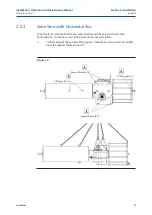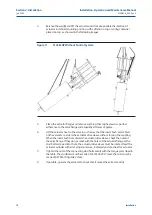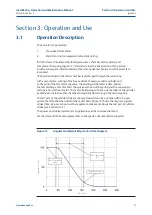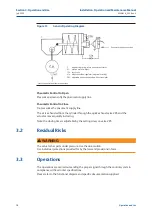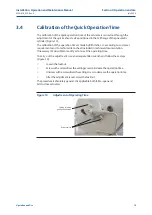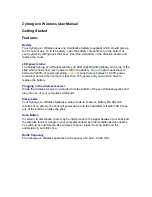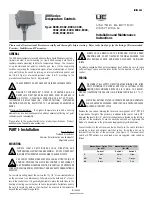
29
Installation, Operation and Maintenance Manual
MAN616_EAC Rev. 5
July 2020
Section 3: Operation and Use
Operation and Use
3.7
Preparation for Start-up
3.7.1
Pneumatic Connections
Connect the actuator to the pneumatic feed line with fittings and pipes in accordance to
the plant specifications. They must be sized correctly in order to guarantee the necessary
airflow for the operation of the actuator, with pressure drops not exceeding the maximum
allowable value. The shape of the connecting piping must not cause excessive stress to the
inlets of the actuator. The piping must be suitably fastened so as not to cause excessive
stress or loosening of threaded connections, if the system undergoes strong vibrations.
Every precaution must be taken to ensure that any solid or liquid contaminants, which
may be present in the pneumatic pipe-work to the actuator, are removed to avoid possible
damages to the unit or loss of performance.
The inside of the pipes used for the connections must be well cleaned before use: wash
them with suitable substances and blow through them with air or nitrogen. The ends of the
tubes must be well debarred and cleaned.
Once the connections are completed, operate the actuator and check that it functions
correctly, that the operation times meet the plant requirements and that there are no leaks
in the pneumatic connections.
NOTICE
If necessary to mount components not in Biffi scope of supply please check the accessories
mounting hole details in the documents TN 1028 ( for metric dimension) or TN 1028U
(for imperial dimension)
3.7.2
Electrical Connections
Connect the electrical feed, control and signal lines to the actuator, by linking them up with the
terminal blocks of the electrical components. In order to do this, the housing covers must be
removed without damaging the coupling surfaces, the O-rings or the gaskets.
Remove the plugs from the cable entries.
For electrical connections use components (cable glands, cables, hoses, conduits) which meet
the requirements and codes applicable to the plant specifications (mechanical protection and/
or explosion-proof protection).
Screw the cable glands tightly into the threaded inlets, so as to guarantee the weatherproof and
explosion-proof protection (when applicable).
Insert the connection cables into the electrical enclosures through the cable glands, and
connect the cable wires to the terminals according to the applicable wiring diagram.
If conduits are used, it is advisable to carry out the connection to the electrical enclosures by
inserting hoses so as not to cause anomalous stress on the housing cable entries.
Replace the plastic plugs of the unused enclosure entries by metal ones, to guarantee
perfect weatherproof tightness and to comply with the explosion-proof protection codes
(where applicable).
Once the connections are completed, check that the controls and signals work properly.

